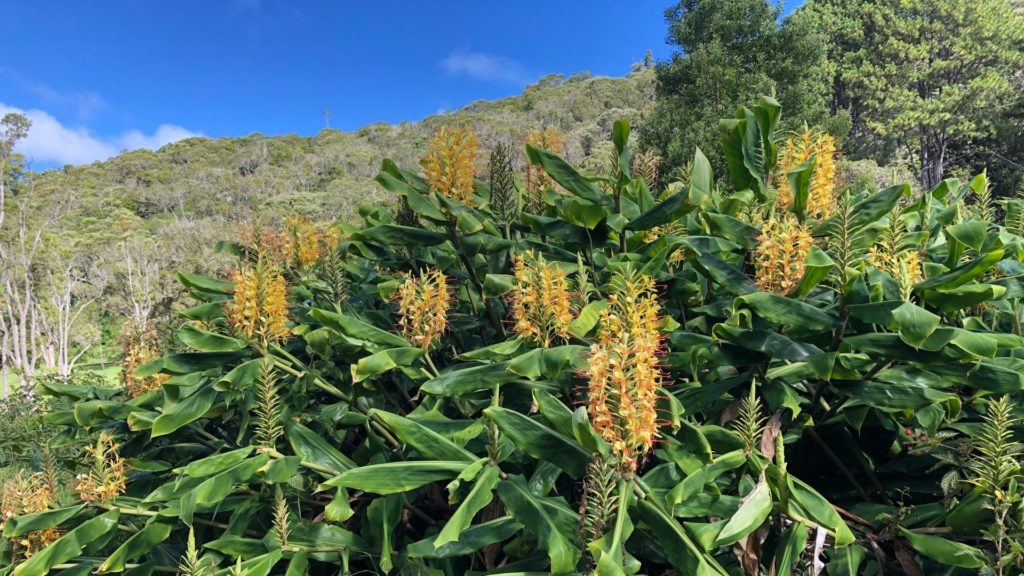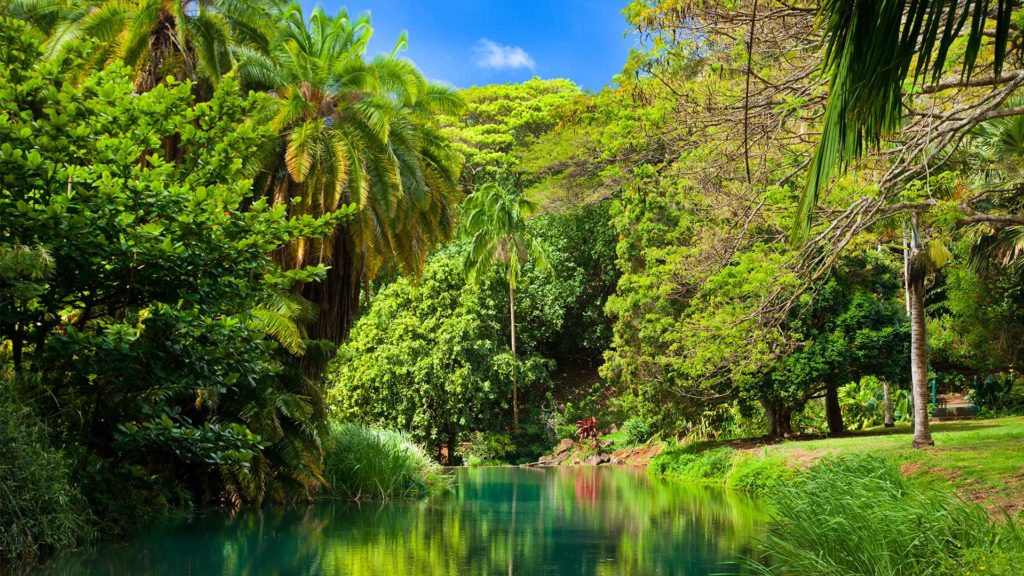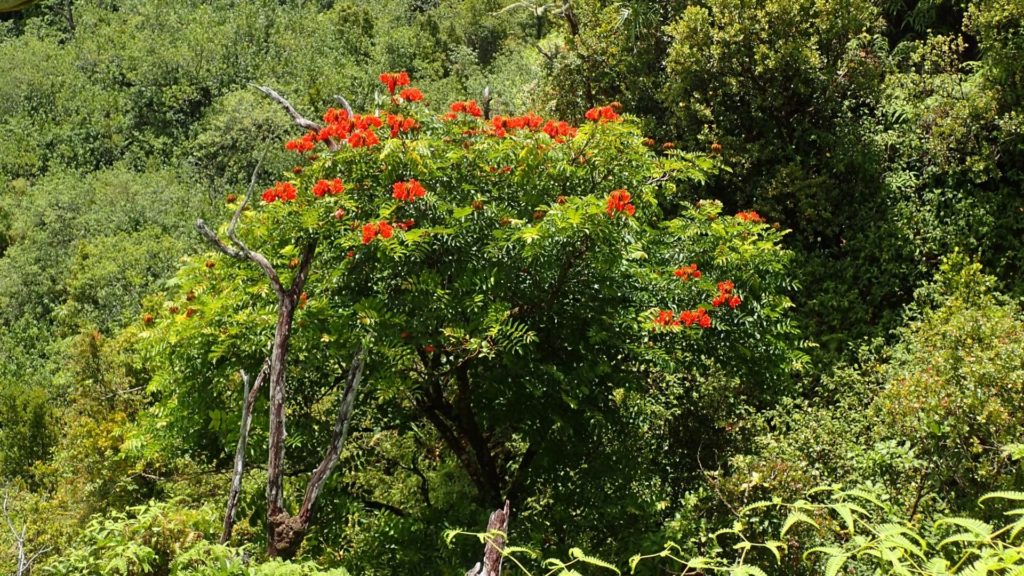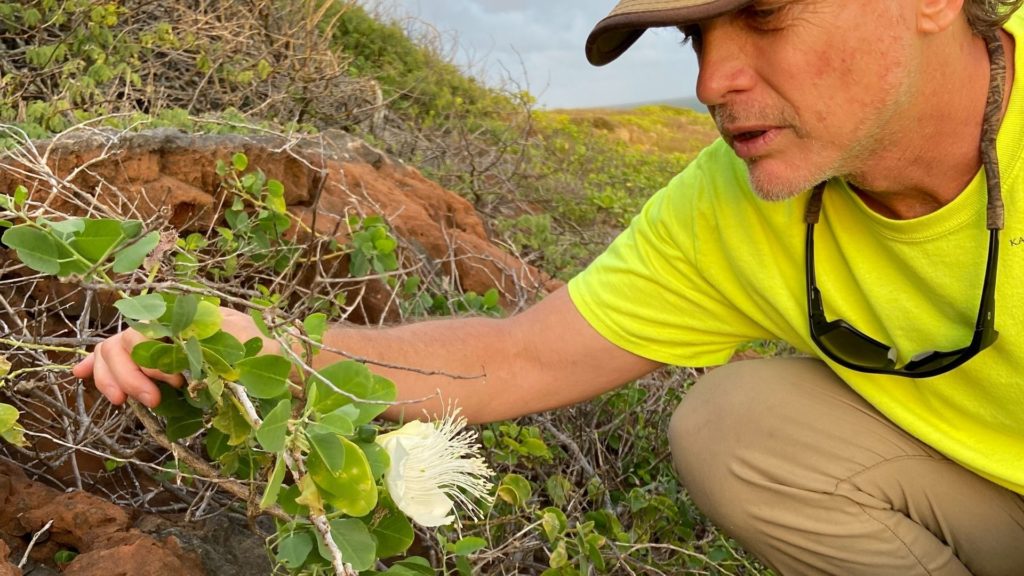February is Invasive Species Awareness Month in Hawaii, a time to consider the threat posed to Hawaii’s unique and irreplaceable flora and fauna. The Hawaiian Islands are famous around the world for the high level of endemism—plants and animals found only in a specific location and nowhere else. Of Hawaii’s roughly 1,300 native plants, 90% of them are endemic to the Hawaiian Islands. Many are single-island endemics, for example, found only on Kauai or only on Maui. Others are restricted to a single valley, ridge, or other small geographic area.
Throughout the last century or two, the number of humans and introduced plants and animals have rapidly and dramatically altered ecosystems and affected species to the point that 85% of Hawaii’s land has lost its native flora.

Invasive species continue to take an enormous toll on Hawaii’s natural world. Everything from Himalayan ginger and guinea grass to Coqui frogs, little fire ants, feral ungulates, rats, slugs, and domesticated animals are over-running Hawaii’s vulnerable native flora and fauna.
NTBG is a not-for-profit organization dedicated to plant discovery, scientific research, conservation, and education. Our network of five botanical gardens and four preserves serve as living laboratories and our team of staff and scientists perform an important role in the fight against the damaging effects of invasive species in our communities and native ecosystems. Our efforts to slow and stop the spread of invasive species begin at home in our gardens and preserves throughout Hawaii and Florida, and make a global impact.

Our extensive collections of palms, Rubiaceae, Heliconias, orchids, and many others have been wild-collected by botanists and biologists from throughout tropical regions around the world and transported to our gardens to research, cultivate and thrive. Living collections staff and volunteers monitor our collections regularly to identify species for invasive tendencies to ensure these introduced plants do not become harmful to the surrounding environment. Once identified as invasive, species are deaccessioned and removed.
Threats from outside NTBG’s Living Collections also exist. Invasive species often make their own way into our gardens and it can often be hard to recognize their invasive tendencies among the veritable botanical ark of tropical flora. The Kauai Invasive Species Committee (KISC) assists with monitoring the gardens and have so far helped to identify and remove two taxa that were invasive to Lawai Valley. These taxa have been added to their database for further monitoring.

Invasive species like nutsedge, inkberry, turkeyberry, honohono, and African tulip trees present an ever-growing threat to Kahanu Garden’s collection of Hawaiian and Pacific heritage and agricultural plants as well as the Piilanihale Heiau cultural site. Each year Kahanu Garden staff remove thousands of young plants that arrive as airborne seeds and quickly set deep roots, leave seed banks in the soil, and require months or years of active management. This requires an ever increasing commitment by staff and volunteers to keep the aggressive invasive plants in check.
In addition to KISC, NTBG scientists work with agencies like Hawaii Department of Agriculture and the Department of Land and Natural Resources to provide field observations and reference collections that can be used for specimen identification as well providing population and occurrence information on invasive species.
When our botanists are in the field and observe an invasive plant they’ve never seen on the island before, they document the observation and notify the KISC Early Detection Program. These early detections can mean the prevention of a new invasive species on the island from becoming established.
Conservation of threatened and endangered flora is our highest priority, but stemming the spread of invasive species and the threats they pose to native ecosystems is a big job we can’t do alone. In addition to our team, we rely on dedicated volunteers and curious visitors to help save plants and people. You can help by planning a visit to an NTBG garden, volunteering your time, or making a donation.

Want to make a difference in your own community? Learn more about your native ecosystem and the plants that keep it healthy and thriving. Don’t miss our upcoming webinar spotlighting the fight against invasive species and efforts to propagate native plants for horticulture trade. Register today.